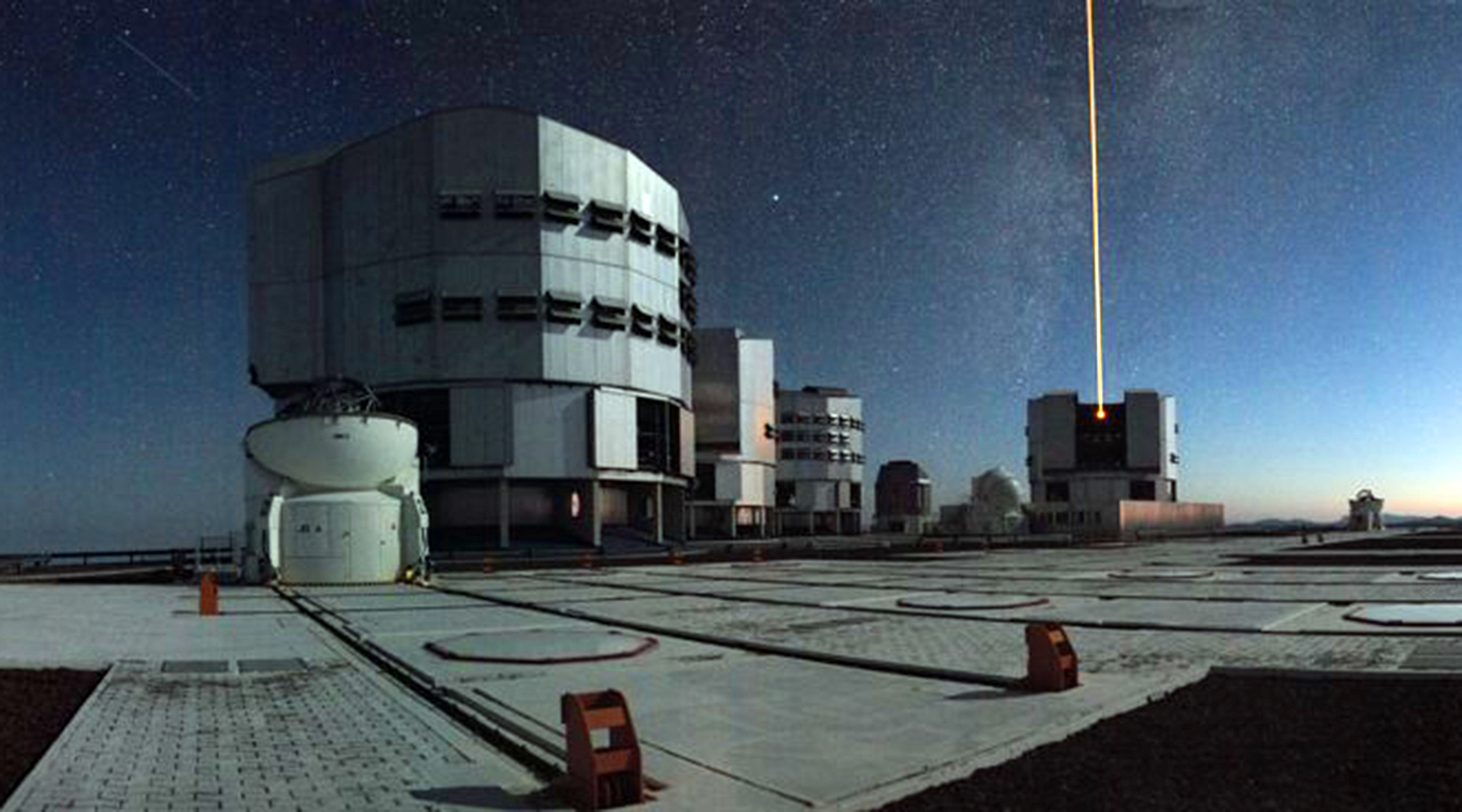Experts from the European Organization for Astronomical Research in the Southern Hemisphere (ESO) obtained the first ever image of a solar-type star accompanied by two giant exoplanets. This was reported in the Astrophysical Journal Letters.
Until now, only two such systems have been discovered with the help of telescopes, while their parent stars are noticeably different from our Sun. This time, the researchers were able to see for the first time a star similar to ours, surrounded by two planets.
“Despite the fact that astronomers have indirectly discovered thousands of planets in our galaxy, only a small fraction of exoplanets have been directly imaged. Direct observation is important for finding an environment that can support life, ”said study co-author Matthew Kenworthy, associate professor at Leiden University.
A unique image was obtained using the "Very Large Telescope" (VLT), located in the Chilean Atacama Desert.
- Very Large Telescope (VLT)
- © ESO / HH Heyer
The investigated planetary system TYC 8998-760-1 is located in the Milky Way at a distance of about 300 light-years from Earth in the Scorpio-Centaurus stellar association in the constellation Fly. In the sky, it is located just south of the constellation Southern Cross. As scientists note, this planetary system is much younger than the Solar system - it is only 17 million years old.
"The find is a snapshot of an environment very similar to our solar system, but at a much earlier stage of its development," - said the main author of the article, doctoral student at Leiden University in the Netherlands, Alexander Bon.
Both detected exoplanets are gas giant satellites and are visible as bright dots in the new image. Taking pictures at different times, the team of scientists was able to distinguish them from background stars.
The planet closest to its sun (inner) rotates from it at a distance that is 160 times the distance from the Earth to the Sun. The second planet (outer) is located from the star twice as far as the first, astronomers noted. Moreover, each of these exoplanets is much heavier than the largest planet in the solar system - Jupiter. The inner planet exceeds its mass by 14 times, and the distant one by six.
Further observations of the TYC 8998-760-1 system will allow us to check whether its planets formed near the star or migrated from somewhere else. Also, scientists plan to study the interaction of two exoplanets with each other.
According to European astronomers, the study of such systems will provide a better understanding of how the planets formed and developed around our Sun.

